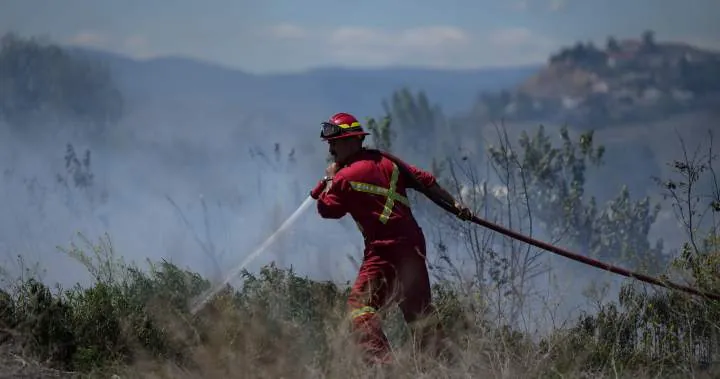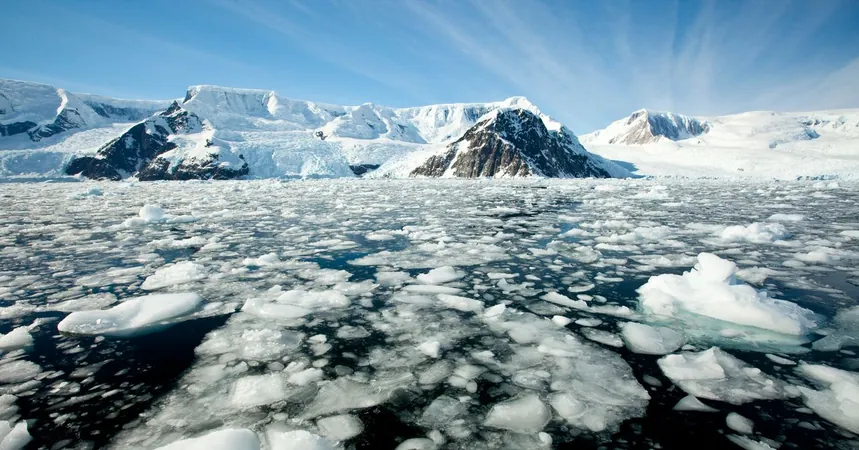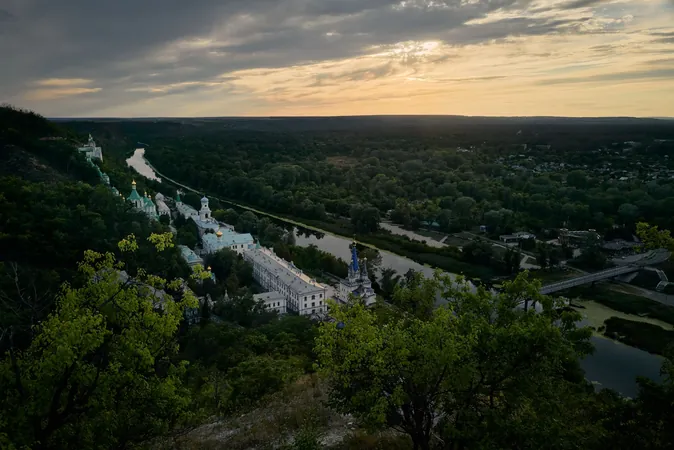
Why Canada Struggles to Tame Wildfires: Insights from Experts and Firefighters
2025-08-23
Author: William
As Canada faces increasingly severe wildfire seasons, the effectiveness of its firefighting and prevention strategies is under intense scrutiny, both domestically and internationally. Many people are left wondering: why can’t Canada just extinguish all the wildfires raging across the nation?
Experts, including forestry scientists and firefighters, emphasize that this isn’t as simple as it sounds. Factors such as environmental impact, limited resources, and the challenging terrain play significant roles in their ability to combat these blazes. Sarah Budd, a fire information officer with the BC Wildfire Service, explains, “It’s not just about throwing water on the flames—there’s a complex web of considerations.”
Interestingly, some of the loudest calls for change are coming from lawmakers in the U.S., where smoke from Canadian wildfires has raised air quality alarms. In response, Canada’s federal government has announced a multi-million dollar funding boost aimed at enhancing wildfire prevention initiatives—particularly as climate and fire patterns continue to evolve.
Steve Taylor, a wildfire scientist, stresses the importance of resilience in wildfire strategies. “As fire becomes more commonplace due to climate change, we must adapt our communities to coexist with it,” he asserts, highlighting the urgency of developing better-fitted strategies.
The response to a wildfire is not one-size-fits-all; it varies depending on factors like size and location. According to Budd, firefighters prioritize those blazes that pose immediate threats to life and infrastructure, including protections for Indigenous communities and historic sites. In many cases, direct ground intervention is possible—if it’s safe—but that’s not always the case.
Fires rated four or higher on a six-point scale can be especially perilous and may require a planned ignition of fuels outside their boundaries to prevent further spread. Interestingly, wildfires are a natural occurrence in many forest ecosystems, particularly in Canada’s extensive remote zones. Taylor notes that numerous tree species in boreal forests have evolved to thrive after fire, making it a necessary part of ecological renewal.
In fact, about 40% of Canada’s forests will experience wildfires that require no suppression to facilitate natural regrowth. “Many of these areas are too remote for firefighters to reach effectively,” Taylor adds, explaining that fires in these regions might only be detected through satellite imaging.
In the midst of this crisis, some politicians have called for more aerial firefighting resources, like water bombers. However, Budd cautions that aerial drops are not a panacea—they only cool down the flames temporarily, enabling ground crews to safely engage.
What truly extinguishes a fire, she explains, is eliminating the underlying fuel. Conditions such as heavy smoke can also obstruct aerial firefighting units, making safe operations a challenge.
Canadian provincial wildfire authorities often share resources, including aircraft, with each other. In extreme cases, assistance may come from the military or U.S. agencies.
According to Natural Resources Canada, the increasing wildfire risk stems from a variety of factors like climate change, expansion into previously wooded areas, and past land management practices. "Challenges remain in balancing the occurrence of natural fires while safeguarding communities and infrastructure from their risks,” a spokesperson stated.
With the surge in wildfire incidents and their related air quality issues, Taylor calls for enhanced research to refine and improve wildfire strategies. Notably, he points to innovative studies in Alaska that focus on mitigating fires in peatland areas—known for their lengthy smoldering periods and harmful emissions.
However, geography will always complicate efforts to control every wildfire. The priority, as Taylor emphasizes, should be on community resilience and proactive prevention. Strategies like fuel management through thinning and prescribed burns, as well as rigorous planning and zoning standards, can make a significant difference.
In light of these challenges, the recent $45.7 million funding for research—including $3.9 million for Indigenous-led initiatives—aims to address many of the pressing concerns surrounding Canada’s wildfire crisis.









 Brasil (PT)
Brasil (PT)
 Canada (EN)
Canada (EN)
 Chile (ES)
Chile (ES)
 Česko (CS)
Česko (CS)
 대한민국 (KO)
대한민국 (KO)
 España (ES)
España (ES)
 France (FR)
France (FR)
 Hong Kong (EN)
Hong Kong (EN)
 Italia (IT)
Italia (IT)
 日本 (JA)
日本 (JA)
 Magyarország (HU)
Magyarország (HU)
 Norge (NO)
Norge (NO)
 Polska (PL)
Polska (PL)
 Schweiz (DE)
Schweiz (DE)
 Singapore (EN)
Singapore (EN)
 Sverige (SV)
Sverige (SV)
 Suomi (FI)
Suomi (FI)
 Türkiye (TR)
Türkiye (TR)
 الإمارات العربية المتحدة (AR)
الإمارات العربية المتحدة (AR)